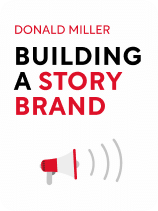

This article is an excerpt from the Shortform book guide to "Building a Storybrand" by Donald Miller. Shortform has the world's best summaries and analyses of books you should be reading.
Like this article? Sign up for a free trial here .
What is fear marketing? Does it work?
Fear marketing is a style of marketing that plays upon negative emotions like fear. This type of marketing appeals to humans’ need to reduce vulnerability.
Read more more about fear marketing.
Negative Stakes and Fear Marketing
There are only two motivations in life: 1) get something good or 2) avoid something bad, and the last two elements of the SB7 Framework address these motivations.
The sixth of the seven story elements is the negative stakes—what happens if the character fails to act, fails to solve the problem, and fails to get what she wants? In narrative, the possibility of loss—and the terrible consequences loss comes with—creates suspense and motivates the audience to stay engaged with the story. (Shortform example: In Harry Potter, if hero Harry doesn’t defeat villain Voldemort, Voldemort will take over the wizarding world and torture or murder people.)
In branding, the possibility of loss—the bad things that will happen to your customer if she doesn’t buy your product—motivates your customer to continue looking for a solution to the problem and a happy ending to her story. (Shortform example: if you sell hand soap and your customer doesn’t buy it, her hands will be filthy and could infect her with diseases.)
Stakes are important because every moviegoer and customer, when confronted with a story, is always subconsciously asking, “Why should I care?” and “Where can this take me?” If there’s nothing at stake, the story is boring, and people tune out.
First, we’ll discuss the power of negative stakes. Then, we’ll discuss how to employ them, and how to add them to your brandscript using fear marketing.
Loss Aversion
One type of fear marketing is loss aversion. Interestingly, people aren’t proportionally affected by gains and losses—people dislike losing more than they like winning. For example, a person will be happy if they win $200, but much more unhappy if they lose $200. As a result, negative stakes are a stronger motivator than positive ones, and in some cases, people are two or three times more driven by loss than gain.
For example, for a long time, George Wallace, the governor of Alabama, resisted the 1964 Civil Rights Act. Lyndon Baines Johnson was able to convince him to stop opposing it by laying out the negative stakes of doing so: If Wallace kept up resistance, he’d go down in history as hateful.
(To learn more about loss aversion, read our summary of Daniel Kahneman’s Thinking, Fast and Slow.)
Fear Marketing: Use Fear Sparingly
Fear is an effective motivator and can create a sense of urgency, but its application requires a delicate hand. When people aren’t scared enough, they don’t act. Most brands tend too hard in this direction by not bringing up any negative stakes at all. This makes the story boring and people tune out.
On the other hand, when people are too afraid, they also don’t act—they just ignore everything because it’s overwhelming. Additionally, fearmongering annoys customers, and brands that do it don’t usually succeed.
“Fear Appeal”
To effectively use negative stakes in marketing, there is a four-step process that gently brings up a fear and then demonstrates that there’s a way to avoid it coming to pass. Here are the steps:
- Show the customer she’s vulnerable.
- (Shortform example: An advertisement might start with, “A large percentage of homes in the Pacific Northwest won’t survive an earthquake, even though the region is overdue for a major seismic event.”)
- Tell the customer she should reduce her vulnerability.
- (“Nobody wants their house to collapse on them during an earthquake, so you should take steps to fix this.”)
- Tell the customer about a specific action.
- (“Our brand offers earthquake-proofing retrofits.”)
- Call her to this action.
- (“Phone today for a quote.”)
Writing Your Brandscript
To write your brandscript with fear marketing:
- Return to your StoryBrand BrandScript or sheet of paper.
- Brainstorm negative things that your customers will suffer if they don’t buy your product.
- Brainstorm specific actions you could tell your customer to take to avoid these negative things.
- Brainstorm ways to call your customers to take action.
- Write at your top three negative stakes on your script or sheet of paper. (You don’t need very many to get the point across.)

———End of Preview———
Like what you just read? Read the rest of the world's best book summary and analysis of Donald Miller's "Building a Storybrand" at Shortform .
Here's what you'll find in our full Building a Storybrand summary :
- How storytelling enhances brand marketing
- Why you should make the consumer the hero of your brand's story
- The 7 elements that make marketing work






